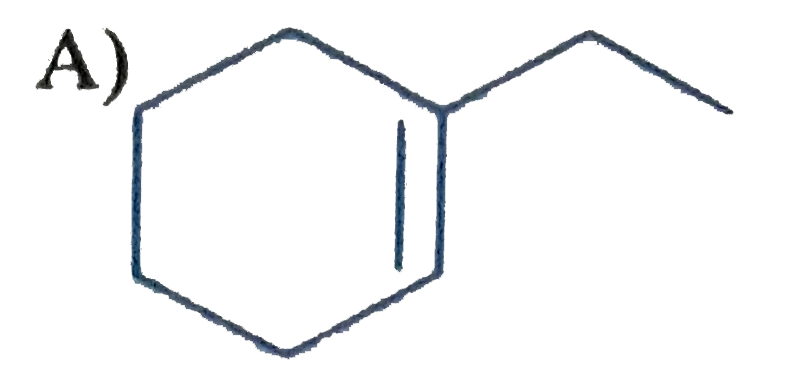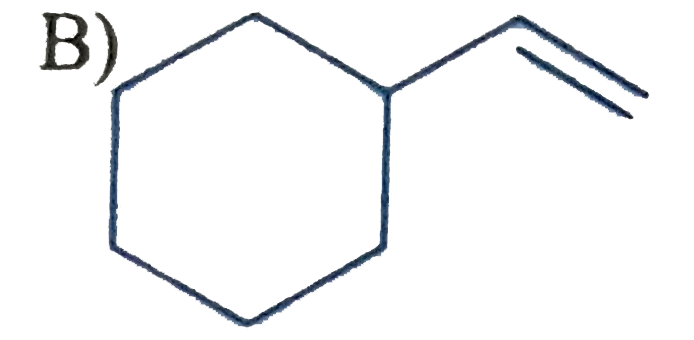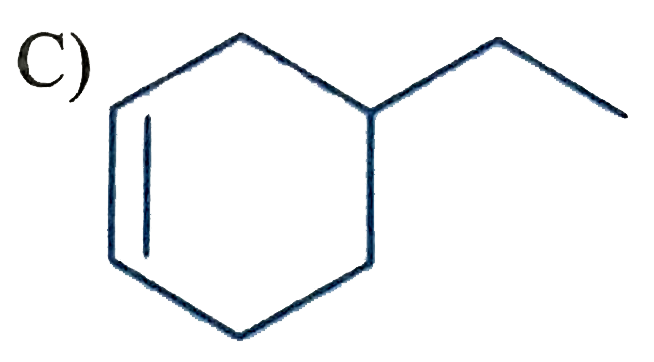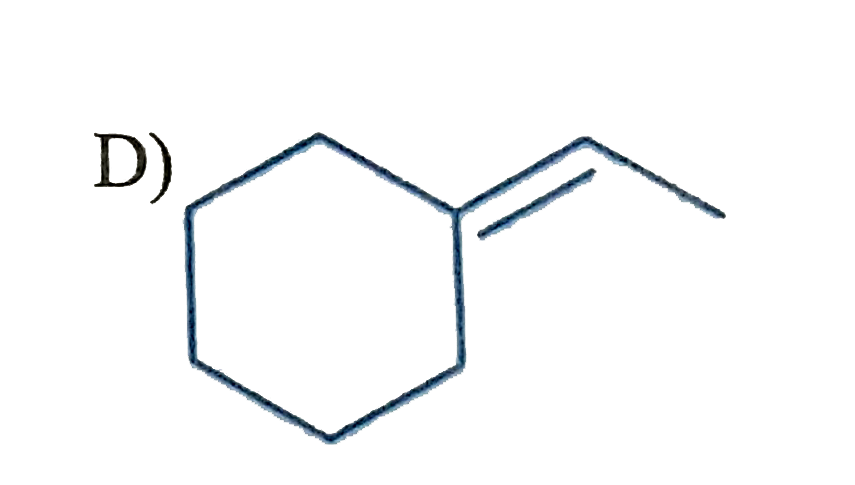The Sabatier-Senderens reduction is carried out by passing the vapors of organic compound mixed with hydrogen over _______ catalyst at 200−300∘C.
NiO
Pt
Pd
Ni
The correct Answer is:D
The Ni catalyst was prepared by the scientists by reducing NiO (deposited on a suitable inert porous support, e.g., Kieselguhr) with a Ni salt, treated with NaOH, washed and dreid and the resulting NiO was reduced with H2 at 300−450∘C.
Topper's Solved these Questions
Similar Questions
Write the structural formula of the major product in the following case.
Ethene mixed with air is passed under pressure over a silver catalyst at 250∘C.View SolutionIn the decomposition of H2O2 at 300 K , the energy of activation was found to be 18 kcal/mole , while it decreased to 6 kcal/mole when the decomposition was carried out in the presence of a catalyst at 300 K . How many times is the catalysed reaction faster than the uncatalysed one ?
View Solution
Knowledge Check
- Question 1 - Select One
Benzene vapour mixed with air when passed over V2O5 catalyst at 775K gives
AGlyoxalBOxalic acidCMaleic anhydrideDFumaric acid - Question 2 - Select One
Hydrogenation of alkenes and alkynes takes place in presence of certain catalysts. In Sabatier Senderen's reaction, the addition of hydrogen takes place I presence of Raney nickel catalyst. Platininm and palladium can also be used as catalyst and used in finley divided state. Experimentally, it is observed that less crowded alkenes adsorb H2 with faster rate. Controlled hydrogenation of alkyne H2 with faster rate. Controlled hydrogenation of alkyne in presence of Lindlar's catalyst yields cis product i.e., 'cis' alkene. Thus, in presence of Lindlar's catalyst 'syn' addition takes place. The relative rate of hydrogenation follows the order:

Non-terminal alkynes are reduced in presence of Na or Li metal dissolved in liquid ammonia. In this reaction, anti-addition of hydrogen results into the trans-product.
Answer the following questions:
The relative rate of catalytic hydrogenation of following alkenes is:
 AIIgtIIIgtIVgtIBIgtIVgtIIIgtIICIIIgtIVgtIgtIIDIIgtIVgtIgtIII
AIIgtIIIgtIVgtIBIgtIVgtIIIgtIICIIIgtIVgtIgtIIDIIgtIVgtIgtIII - Question 3 - Select One
Hydrogenation of alkenes and alkynes takes place in presence of certain catalysts. In sabatier-Senderen's reaction, the addition of hydrongen taken place in presence of nickel catalyst. Controlled hydrogenation of alkyne in presence of Lindlar's catalyst gives cis-alkene. Non terminal alkynes are reduced by Na or Li metal dissolved in liquid NH3. In this reaction trans alkenes are formed.
Q. In which of the following the reaction is most exothermicA B
B C
C D
D
In the decomosition of H2O2 at 300K, the energy of activation was found to be 18kcal/mole while it decreased to 6 kcal/mole when the decomposition was carried out in the presence of a catalyst at 300K. How many times is the catalysed reaction faster than the uncatalysed one ?
View SolutionA hydrogenation reaction is carried out at 500 K. If the same reaction is carried out in the presence of a catalyst at the same rate, the temperature required is 400 K. Calculate the activation energy of the reaction if the catalyst lowers the activation energy by 20 kJ mol−1 .
View SolutionHydrogenation of alkenes and alkynes takes place in presence of certain catalysts. In sabatier-Senderen's reaction, the addition of hydrongen taken place in presence of nickel catalyst. Controlled hydrogenation of alkyne in presence of Lindlar's catalyst gives cis-alkene. Non terminal alkynes are reduced by Na or Li metal dissolved in liquid NH3. In this reaction trans alkenes are formed.
Q. The product of the following reaction is
 View Solution
View SolutionWood spirit is obtained by catalytic reaction of water gas with hydrogen at 200−300∘C. The catalyst used is:
View SolutionWhat happens when a mixture of acetylene and hydrogen is passed over heated Lindlar's catalyst
View Solution

